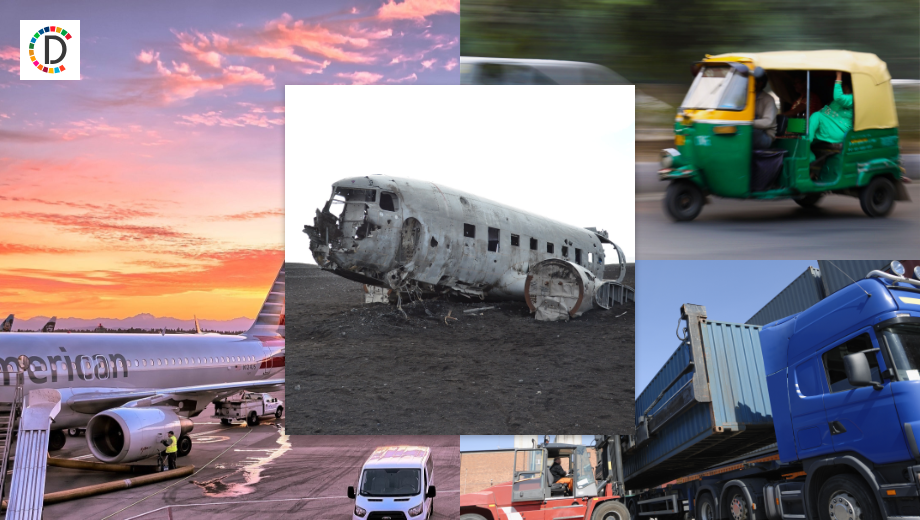Domestic airfares on northward trajectory; still among lowest globally: Experts

- Country:
- India
Domestic airfares are sailing northwards, surging up to 40 per cent in key routes on higher traffic and capacity constraints in the last six quarters. Still, ticket prices are among the lowest in the world, according to experts.
India is one of the world's fastest growing civil aviation markets and on average, 4.5 lakh passengers travel on domestic flights daily. While only a small percentage of the country's population travels by air, capacity constraints are a key challenge as many aircraft are grounded mainly due to supply chain issues.
Aviation consultancy firm CAPA India said that average fares on the top 20 domestic routes had not moved significantly in nominal terms for the last two decades, until the last six quarters during which they have been up by close to 40 per cent.
The routes include Mumbai-Delhi, Bengaluru-Delhi, Bengaluru-Mumbai and Delhi-Hyderabad.
The trend has been driven by serious capacity shortages with an average of 150 aircraft on the ground due to supply chain and other issues, CAPA India said during a webinar this week and added that structurally, high pricing should continue into FY2026.
''In the last three years, especially after the coronavirus pandemic, fares have gone up. Still, the average fares are among the lowest in the world.
''For instance, the average fare for a flight between Delhi and Mumbai will be around Rs 5,000 to 6,000. It might seem like a big rise in terms of percentage but the quantum of rise is not significant when the overall inflationary pressure is taken into account,'' Sanjay Kumar, President & CEO of InterGlobe Technology Quotient Ltd, told PTI.
Part of the InterGlobe group, the company is into the travel technology segment.
Kumar, who had also served as the Chief Commercial Officer at IndiGo, also pointed out that while Indians are supposed to be price-conscious, airfares in the country have actually come down in comparison with the inflationary pressures over the years. The low fare regime also resulted in quite a few airlines having gone out of business due to the mismatch in their costs and revenues, he added.
CAPA India noted that adjusted to inflation, the average fare of Rs 4,989 in FY2004 rose to around Rs 11,000 in FY2020.
In the early 2000s, despite far less efficient operations with respect to seat and aircraft utilisation, airlines were largely able to break even because in real terms, fares were significantly higher, it added.
Air ticket prices in the country are deregulated, and fares are mostly a function of supply and demand.
Data shared by aviation analytics firm Cirium with PTI showed that India had the lowest average domestic airfare among the key markets in 2023.
As per the analysis, the one-way average economy class fare was USD 80 for a distance of 622 miles while it was USD 167 for 768 miles in Australia and USD 114 for 709 miles in Brazil.
In the case of the US, the fare was USD 180 for 1,108 miles, USD 126 for 860 miles in China, USD 106 for 813 miles in Europe and USD 173 for 928 miles in Canada.
An aviation industry expert said that compared to various developed markets, airfares are very affordable in India, which is also a very price-sensitive market.
The affordability and paying capacity of people in the Western countries are high compared to India and also there is the element of overall costs being relatively low for Indian carriers compared to other markets, the expert said.
''Airlines have resumed a more effective pricing strategy for revenue maximisation, with fares increasing steadily in the last month prior to departure, and especially during the last three days,'' CAPA India said.
Kumar emphasised that airlines should be able to strike a balance between their cost which is primarily a reflection of efficiency and revenues which are a reflection of fares.
''While we have also seen airlines can be profitable with lower load factors with reasonable fares and at the same time, can be financially weak despite operating with over 90 per cent loads with low fares. If an airline is able to remain profitable with around 60 to 65 per cent load factor, then that is also good commercially,'' he said.
* Airline CEOs on airfares There is healthy and tough competition in the Indian market, which is also price-sensitive. The overall price levels in India are very very competitive, IndiGo CEO Pieter Elbers told PTI in March.
When you compare them to parts of Europe, East Asia, North America or any decent-sized aviation economy in the world, India has some of the most affordable airfares by a long margin. Indian airfares are incredibly affordable, Akasa Air Founder and CEO Vinay Dube told PTI in March.
The fares in India on a distance-per-distance basis, are probably one of the lowest in the world. And I mean, if you compare to say, the US or other parts of the world, Vistara CEO Vinod Kannan told PTI in April.
* Concerns over high airfares In February, a Parliamentary panel said self-regulation of ticket prices by airlines has not been effective and proposed route-specific capping of airfares and setting up of a separate entity to exercise control over air ticket prices, amid concerns in various quarters about surging fares.
(This story has not been edited by Devdiscourse staff and is auto-generated from a syndicated feed.)










